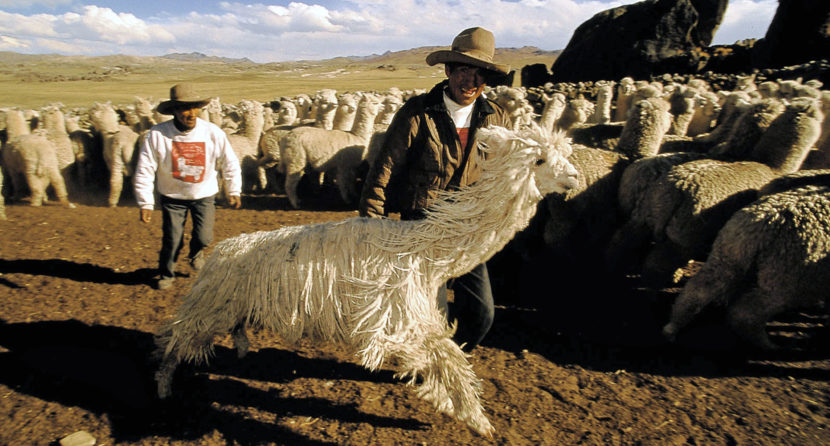By guarding and expanding the reserve at Pampa Galeras, adding new reserves throughout Peru, and curtailing commerce in vicuña pelts by use of the Endangered Species Act, the Peruvian government helped the vicuña avoid extinction. But the poachers persisted, and the long-term health of the vicuña population was far from assured.
Then in 1991, Peru passed an innovative new law to govern the management of all camelids. For the first time in 100 years, it became legal to export alpacas and llamas.
A new government entity, the Council of National Camelids of South America (CONACS), was formed to manage camelid agriculture. Today, the vicuña are shorn, tagged, counted, and released unharmed. Their absence of hair prevents poaching – shorn vicuña are of no value to the poacher.
In many ways, the story of the vicuña is a metaphor for the alpaca, which have weathered many a manmade storm while clinging to a fragile existence on the plains of the high sierra.
High-quality alpacas were exported to the United States beginning in 1993 and lasting through 1998. Simultaneously alpacas were exported to Canada, Australia and Europe. In over 30 countries today, alpacas are bred in a more calculated fashion than is commonly the case in South America. This has led to the improvement of the breed worldwide, including in Peru.
The last 100 years have been hard on the alpaca in Peru, as their numbers have been constantly declining. The vicuña and alpaca’s struggle for survival intensified beginning in the early part of the 20th Century, World War I and II were fought, and Peru was ravaged in the 80s and 90s by Shining Path terrorism and faced continued political turmoil.
In many ways, the effort to save the vicuña has paralleled the worldwide resurgence of the alpaca. It is only recently that the alpaca’s future has brightened, as herds have been established outside Peru, and international attention has been focused on raising and improving the Suri and Huacaya breeds.
There were only a few thousand alpacas outside South America in 1991, when CONACS was formed, and it became legal in Peru to harvest vicuña fleece and export alpacas. Just 22 years later, there are almost 600,000 alpacas living in the United States, Canada, Australia, England, and Europe.
The story of the alpaca import and export is filled with political intrigue, colorful characters, greed, and success. I will unveil this story through a series of posts on Peru Unplugged… Stay tuned!
